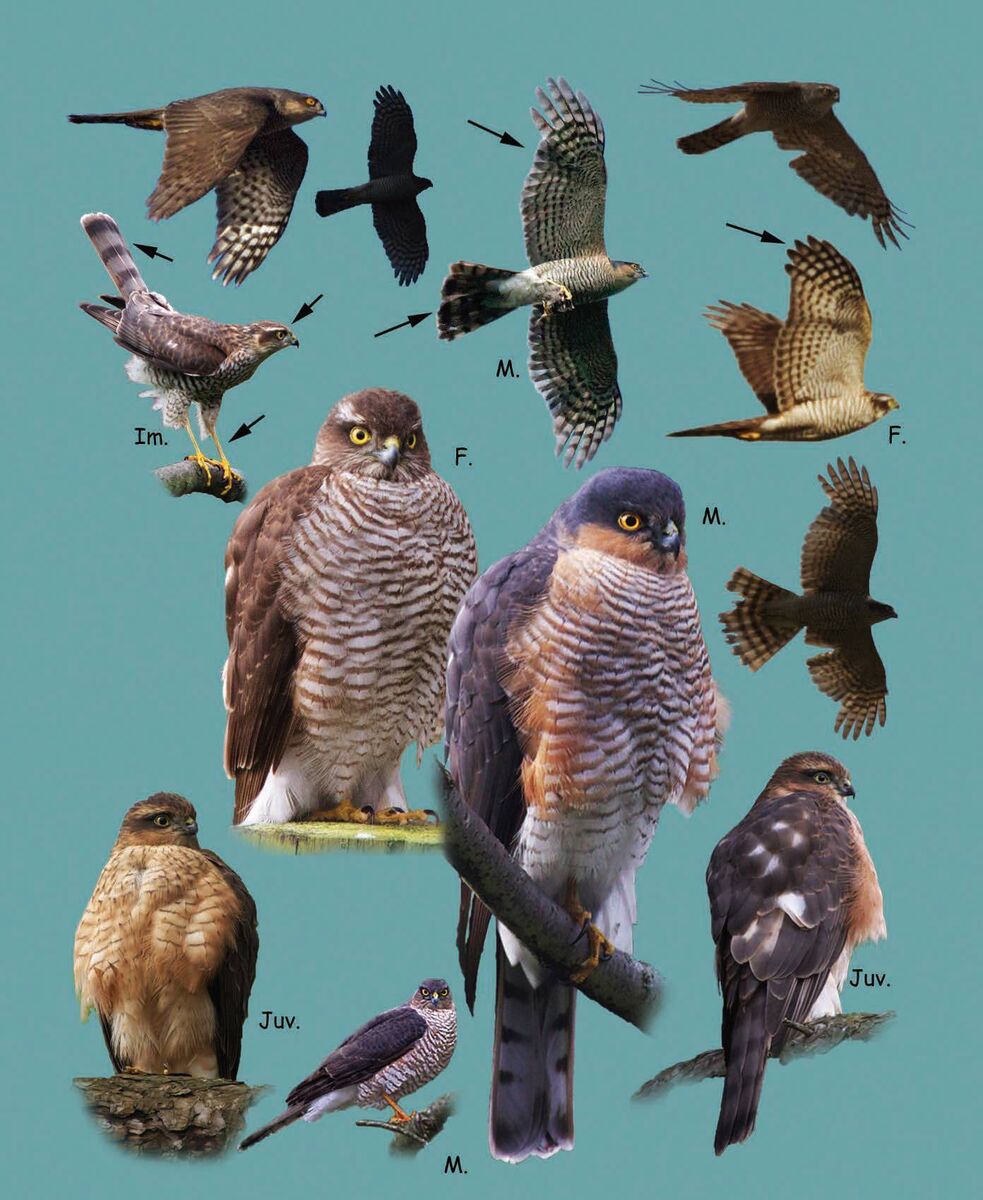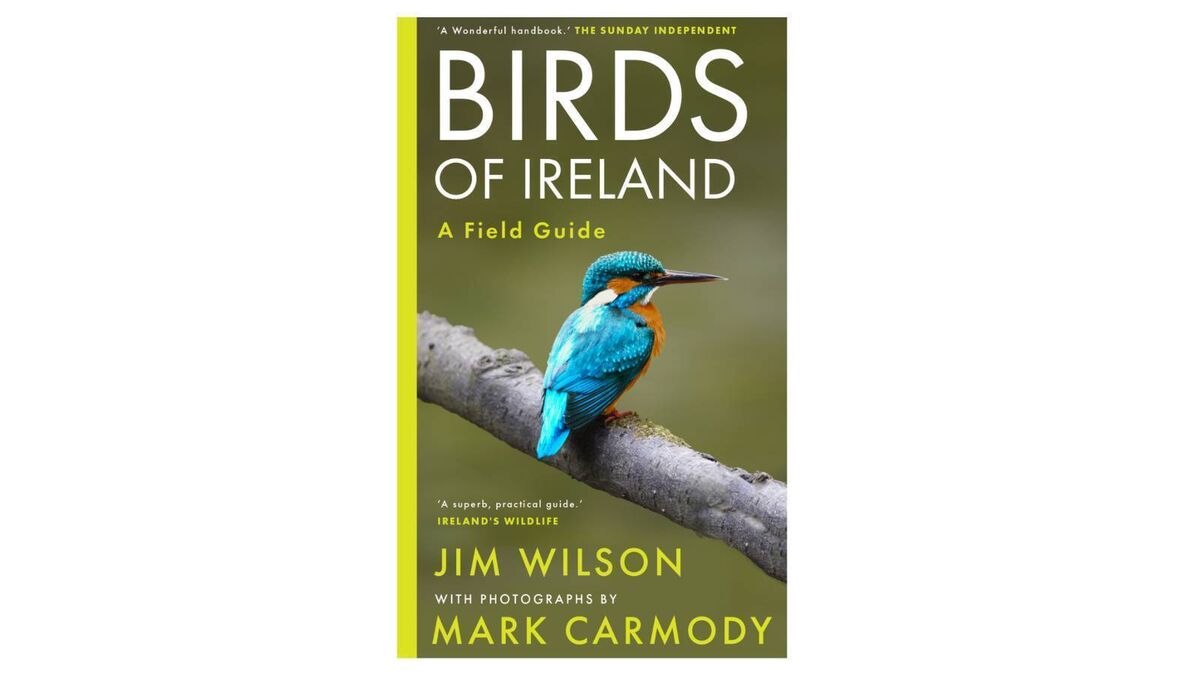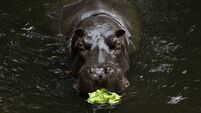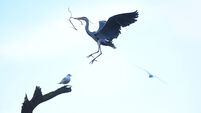Birds of Ireland: Sparrowhawk

A sparrowhawk (Accipiter nisus) has a wingspan of 60-80 centimetres
A sparrowhawk is about 30-34 centimetres long with a wingspan of 60-80 centimetres. They are a common breeding species found on woodland, farmland, and gardens here all year around.
A sparrowhawk is jackdaw-sized.
The males have blue-grey upperparts, and an orange-brown cheek/upper breast. Their lower breast/belly is barred white and orange-brown. Their tail is broadly barred light/dark grey-brown.
Female sparrowhawks are larger than the males and have dark grey upper parts, a pale supercilium (feathers above the eyelid); and are barred white/dark brown below.
Juvenile and immature sparrowhawks have dark brown upperparts, with pale edges to their back/wing coverts; and their undersides are heavily barred dark brown.

In flight, a sparrowhawk's broad blunt-ended wings can be seen along with their long, slightly rounded tail. They fly with rapid wingbeats with short glides — they do not hover.
Sparrowhawks have a varied sound repertoire during breeding season, including loud high , often repeated. Begging young make a high, squeaking . They are silent outside breeding season.
The trapping of all wild birds is illegal. The only exceptions are when a licence is given to qualified bird-ringers for the purpose of studying birds which are released unharmed.
A significant function of BirdWatch Ireland and the RSPB is to ensure that the laws relating to wild birds are enforced by statutory agencies and, on occasion, to cooperate with the authorities in taking legal action against those who break these laws. Through the monitoring of bird populations they will also make recommendations for changes in the law if it is thought to be inadequate.

- Jim Wilson is a wildlife writer, broadcaster, tour leader, and former chairman of BirdWatch Ireland. He has been involved in the study and conservation of birds in Ireland for more than 45 years, contributing to several major surveys and international projects.
- Mark Carmody is an award-winning wildlife photographer, has a PhD in biochemistry and works as a European patent attorney.







